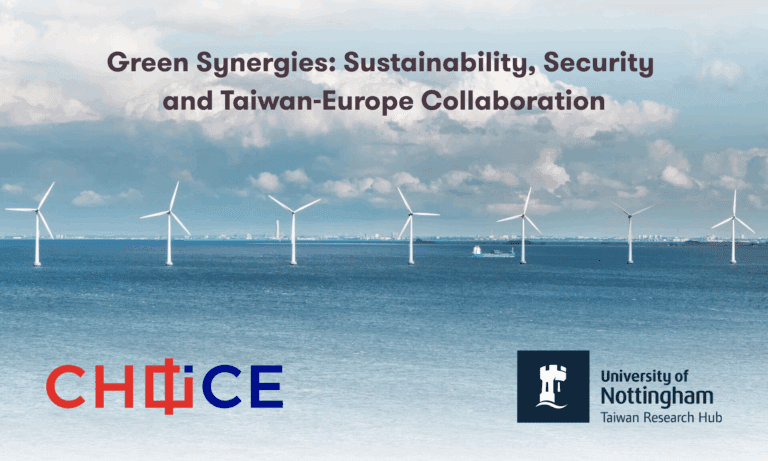Could There Be a Common China Strategy for the Region of Central and Eastern Europe?

This briefing paper summarizes the views and comments of participants of the second China Observers in Central and Eastern Europe (CHOICE) International Working Seminar held on April 11-12, 2019, in Prague, Czech Republic (click here to download the text in pdf).
The event was attended by China experts and foreign policy practitioners from Bulgaria, the Czech Republic, Estonia, Hungary, Lithuania, Poland, Romania, Slovakia, and Slovenia. Their aim was to examine and discuss China’s influence and activities in Central and Eastern Europe (CEE), share best practices from their China-related projects, debate approaches to studying Chinese influence, and outline a China strategy for the countries of Central and Eastern Europe. In this last section, the participants were asked two specific questions: what do CEE countries want from China? And what can CEE countries offer China? CHOICE hopes that these discussions stimulate further debates on China, its rise and its influence throughout the Central and Eastern European region. The seminar was split into three sessions, each addressing one of the specific areas mentioned above.
Examining Influence: Presenting China-related Projects and Approaches to Study Chinese Influence in Central and Eastern Europe
The session began with a brief introduction of the structure and aims of the CHOICE platform and the working methods of ChinfluenCE. The outputs of the CHOICE and ChinfluenCE projects regarding China and CEE countries are having an impact on the China discourse in the field and are read by a large and increasing number of policy and decision makers inside as well as outside the region. Analysts working on ChinfluenCE offered to share with CHOICE platform members their know-how on discourse analyses on China in order to help increase the knowledge on how certain narratives on China are created, what the agenda-setting processes look like, and analyze how these translate into policy.
This was followed by a round of introductions by members, who then began to explore the topic of media coverage of China. This quickly turned into a lengthy discussion on Chinese involvement in the media in CEE countries and on distinguishing between public policy and propaganda. Some participants pointed out that while China may not have begun to use disinformation strategies yet, it is already acting outside the realm of public diplomacy. One member questioned whether China is really interested enough in CEE countries to want to spread fake news and propaganda. It was noted that the problem with propaganda is that many readers from Central and Eastern Europe cannot distinguish infotainment from regular news and do not check the information. Thus, there is a space for improvement both in media and think tanks and the academic community in CEE in media literacy. It was suggested that it would be prudent to construct a comparative framework for analyzing Chinese influence in CEE media and also analyze national investment screening mechanisms’ approaches to the protection of media from foreign influence.
Observing China: Assessing Chinese Activities in Participants’ Countries
After a detailed discussion on China’s influence in the CEE media during the first session, the second session addressed other aspects of Chinese interaction and influence. Firstly, there was a resounding consensus, accompanied by dissatisfaction, on the lack of Chinese investment in CEE since the emergence of the 16+1. This frustration was caused by the many talks and promises of large-scale forthcoming investment – made by Chinese officials – that have failed to materialize. Even confirmed projects are seen as unlikely to materialize.
The reasons for this lack of investment vary, however, a common trend appears as policy actors in CEE countries make premature plans for Chinese investment before the investment is guaranteed. They seem to have been too eager to believe in Chinese businessmen’s rhetorics and do not proceed with due diligence checks. In Estonia, a Chinese company was supposed to invest 15 billion EUR into a tunnel, based on a belief that a Chinese company could complete the infrastructure project faster and with fewer resources than the European Union or a European company. However, the deal fell apart when it was revealed that the 15 billion EUR bid was made by a company without any value. Furthermore, there appears to be a tendency by many policy actors in Central and Eastern Europe to assume China will fund any proposed infrastructure development, leading to high expectations.
The lack of investment has nowhere been more striking than in Hungary, where a burgeoning political relationship with China has overshadowed the fact that there has been very little happening on the economic front. China has a significant amount of investment in Hungary, a fact both countries are more than happy to publicize, however, the majority of it came prior to 2010, which preceded both the current government and the inception of the ‘16+1’ platform, rendering the current government’s claimed ‘achievement’ a misbelief. The Budapest-Belgrade rail line is an interesting and highly publicized case. There are, however, questions about its economic advantage, given the fact that the price of the tender was 20% higher than the estimates. This makes it by far the most expensive railway in Hungary, despite the fact that most of the line is flat and requires no tunnel or bridge building. In the end, China’s final offer was rejected by the Hungarian government.
In Bulgaria, too, there is growing skepticism rooted in unfulfilled expectations and China’s self-dictation of the terms of its involvement with the country. A Bulgarian participant elaborated on the lack of experience in dealing with China in Bulgaria. In response, a Polish representative implied that the focus of the discourse about investment, at least in the Polish case, is misguided. Rather than seeking investment, the goal of Polish involvement in 17+1 was to draw Chinese attention to Poland’s strategic location. Following this perspective, the 17+1 platform has been more of a success than a failure for Poland. However, Poland needs to collaborate with Germany and France more to have any impact on what China does.
Unlike the other 16 nations, the Czech Republic experienced lots of development in its relations with China, most of which came during the prolific period of Chinese company CEFC investment. However, the Czech business community learned the lesson from CEFC fiasco and is now skeptical and wary of Chinese investment. It also propelled the Czech Republic to draft its investment screening mechanism.
Another area of particular interest to the discussion was decreasing effectiveness of Chinese diplomacy in CEE, which every member has experienced and commented upon. Firstly, China’s activities cannot fly under the radar as they used to as the world has started paying attention to China’s actions abroad. Secondly, cases of failing China’s diplomacy increased, including mistakes in translations from Chinese to the local languages, miscalculations, and undiplomatic behavior (as showed by e.g. the case of the Chinese ambassador to Prague Zhang Jianmin’s rather blunt Facebook comment4 on the Czech Prime Minister Andrej Babiš’s position on Huawei).
What do CEE countries want from China? What can CEE offer China?
During the third session, the roundtable split into groups, each tasked with answering two questions: What should your country or the CEE region want from China? What can your country or the CEE region offer China?
Participants debated whether 17+1 could serve as a platform for searching for a unifying China strategy. One participant observed that a significant portion of the failure of 17+1 is on the behalf of CEE countries, simply because they have not communicated to China about what they want. The most obvious place to start is infrastructure, with numerous countries claiming a desire to acquire Chinese funding for projects such as highways. There is a sentiment among some countries that their highways have been neglected by EU funding. However, it came to light that for most CEE countries, market funding for highways would actually be cheaper than Chinese loans. This suggests that Chinese funding in infrastructure may not be the economically most viable option.
Other economic avenues of interest were fair access to China’s market and more greenfield and brownfield investment from China in CEE. Participants also debated sharing and transfers in technology, telecommunications, e-commerce, renewables, and electric cars and their manufacturing processes. These topics led to another important aspect of Chinese involvement in CEE, that of developing more clear and stringent policies, and guidelines in economic matters, including joint rules for investment, which could include joint guidelines on what kind of investment is (and is not) welcome in CEE and what this investment should ideally look like. It also touches on areas such as controlling shares and the number of jobs CEE countries want the investments to create. Finally, the participants discussed the need for a clearer understanding of the legal framework for copyright, trademark protection, and financial transfers in China.
While many participants were concentrating on the economic component of CEE countries’ relations with China, some thought it might be best if economics was put to the side and left to be solved by business circles in CEE countries. The core of this belief lies in the structure of CEE economies which are seen as competitive rather than complementary. The cohesiveness of CEE countries gathered into the 17+1 format was also debated. A more cohesive group could agree on what projects or areas China should be welcome to invest in. It would require identifying commonalities among countries or specific sub-regions, and promoting them to China on a sector-by-sector basis.
One of these sectors could be tourism. It was suggested that countries could group together to form multiple-country tourist packages. Cohesiveness could also mean recognizing niche export commodities unique to individual countries and advertising the national brands. In relations with China, this increased cohesiveness could foster good and healthy cooperation by giving Chinese investors a clear idea of what their investment in CEE should look like and making interactions more transparent. It was noted that transparency in China’s dealings with CEE countries’ politicians and in investment deals is currently missing and helps fuel the suspicion of experts, media, civil society organizations, and also the general public.
While the cohesiveness was widely agreed upon, the sector-by-sector approach was met with some skepticism, as the EU already has councils set up for these purposes. These are obviously not CEE specific, yet they involve most countries in CEE. The EU has commerce and sector-based structures (such as the EU SME Centre, designed for facilitating small and medium-sized business deals with Chinese businesses). Creating similar ones for a subset of the EU adds to bureaucracy. This then led some to claim that the 12 out of 17 countries, gathered in the 17+1 platform, who are EU members should be more active in Brussels and pursue these prospects through the established EU avenues. Furthermore, they suggested that this move might be accompanied by a request for special EU services to the countries of the 5 remaining countries that are not EU members.
Another area of interest lies in developing guidelines for universities that want to accept Chinese funding for research. It was suggested that a handbook could be created addressing potential risks that come with Chinese funding, as research institutes strive for funding, but are not often aware of the accompanying risks. The handbook could provide a risk analysis and promote free academic expression and the protection of patents and know-how.
The participants also debated the idea to create a specialized think tank focusing on how to deal with a hegemon effectively. The think tank could interact with Latin American, African, and Asian research institutions which have experience in dealing with Chinese influence in their region.
The debate then shifted to the question of what CEE countries can do to offset the asymmetry of 17+1 in its dynamics with China. The participants generated a number of ideas that will be examined and developed during the next CHOICE platform meeting.
Could There Be a Common China Strategy for the Region of Central and Eastern Europe?
June 2019
Josh Hickman, Ivana Karásková
Written by
Josh Hickman
Josh Hickman worked as an intern at the Association for International Affairs (AMO).
Ivana Karásková
ivana_karaskovaIvana Karásková, Ph.D., is a Founder and Lead of CHOICE & China Projects Lead at the Association for International Affairs (AMO) in Prague, Czech Republic. She is a an ex-Fulbright scholar at Columbia University, NYC, a member of Hybrid CoE in Helsinki and European China Policy Fellow at MERICS in Berlin. She advised the Vice-President of the European Commission, Věra Jourová, on Defense of Democracy Package.


